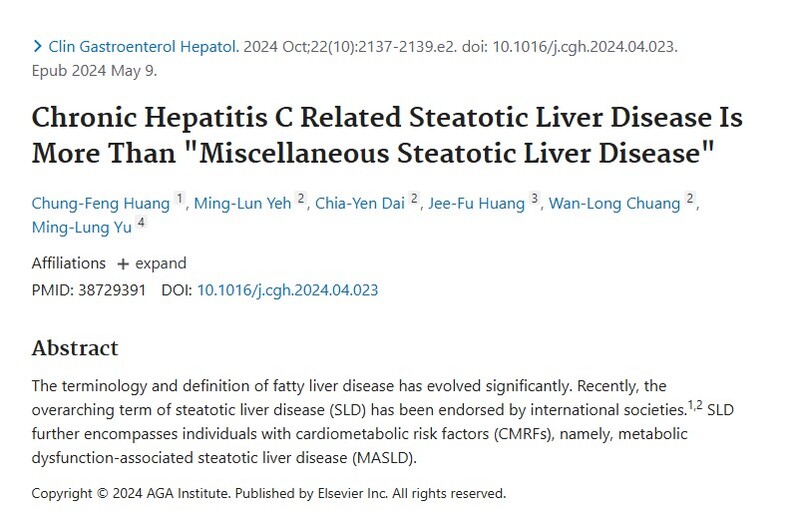Chronic hepatitis C related steatotic liver disease is more than “miscellaneous steatotic liver disease”

Patients with hepatitis C virus (HCV) are prone to develop steatotic liver disease (SLD) and express cardiometabolic risk factors (CMRFs). The current study aimed to address the liver disease severity of SLD with or without CMRF in chronic hepatitis C (CHC) patients. CHC patients were recruited from a nationwide HCV registry in Taiwan. SLD was defined as the presence of hepatic steatosis on sonography. SLD patients who expressed CMRFs were considered to have HCV metabolic dysfunction-associated steatotic liver disease (HCV-MASLD).
A total of 12,462 (93.4%) of the 13,337 SLD patients who expressed at least one CMRF were defined as having HCV-MASLD. The Fibrosis-4 Index (FIB-4) scores were 2.2±2.1, 2.75±2.94, and 3.13+2.99 in SLD patients without any CMRF, HCV-MASLD patients with only one CMRF and HCV-MASLD patients with> 2 CMRFs, respectively (Ptrend <0.001). Conversely, HCV-MASLD patients with advanced liver disease had a significantly higher Framingham Risk Score than those with a FIB-4 score <2.6 (8.4±5.6 vs. 7.9±5.2, P<0.001). HCV-MASLD patients who expressed one CMRF (odds ratio [OR]/95% confidence intervals [CI]: 1.50/1.22-1.84, P<0.001) or > 2 CMRFs (OR/CI: 1.90/1.57-2.31, P<0.001) were at a greater risk of significant fibrosis than SLD patients without any CMRF.
We concluded that CHC patients with SLD and CMRF should be viewed as MASLD as with the general population rather than “miscellaneous SLD”. Attention should be devoted to HCV-MASLD due to the increased risk of advanced fibrosis. (Link)
Reference: Huang, C. F., Yeh, M. L., Dai, C. Y., Huang, J. F., Chuang, W. L., & Yu, M. L. (2024). Chronic Hepatitis C Related Steatotic Liver Disease Is More Than “Miscellaneous Steatotic Liver Disease”. Clinical Gastroenterology and Hepatology.

 r of Excellence for Metabolic Associated Fatty Liver
r of Excellence for Metabolic Associated Fatty Liver